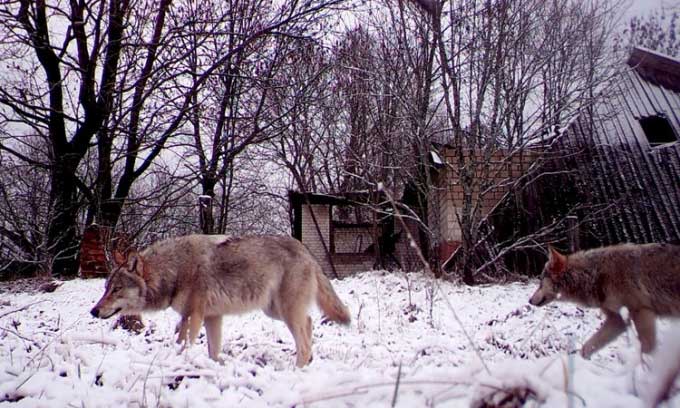Living in an area affected by radiation has made the immune systems of wild wolves resemble those of cancer patients undergoing radiation therapy.

Wolves wandering in the Chernobyl exclusion zone. (Photo: Reuters).
In 1986, a nuclear reactor exploded at the power plant in Chernobyl (Ukraine), located about 80 miles north of Kyiv. The explosion released radiation 400 times greater than that of the atomic bomb dropped on Hiroshima (Japan) during World War II, forcing over 100,000 people to evacuate the city.
Three decades after the accident, Chernobyl remains abandoned and is home to many wild animals. The Chernobyl exclusion zone is considered unsafe for humans. However, the wolf population density here is estimated to be seven times higher than in surrounding areas.
Scientists from Princeton University have fitted radio collars on wandering wolves in the abandoned land to track their movements and take real-time measurements of the radiation they are exposed to. They also collected blood samples to see how the wolves’ bodies respond to cancer-causing radiation.
The results show that wild wolves in Chernobyl are exposed to more than 11 millirems of cancer-causing radiation daily throughout their lives. In comparison, a standard chest X-ray exposes the entire body to about 1 to 2 millirems of radiation.
According to the scientists, the reason why the wolf population thrives in the radiation-affected area is partly due to their genes having the ability to cope with the increasing risk of disease, making their immune systems similar to those of cancer patients undergoing radiation therapy.
The scientists noted that the bodies of dogs and wolves fight cancer in a way similar to humans. They added that this research could identify mutations that help increase survival chances for humans facing cancer.





















































